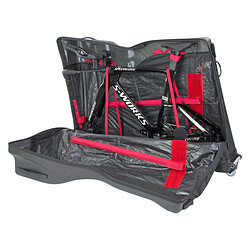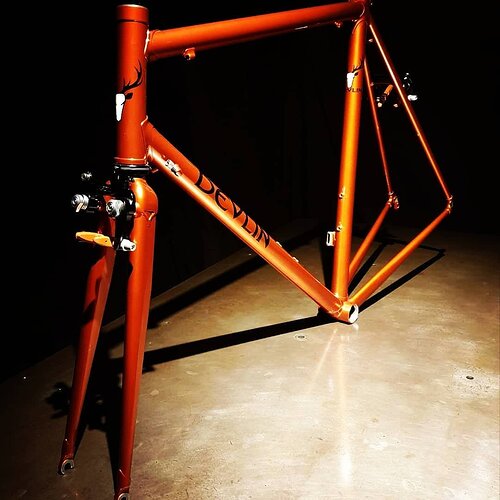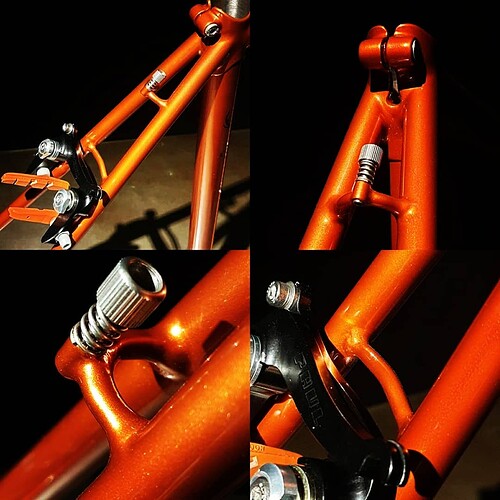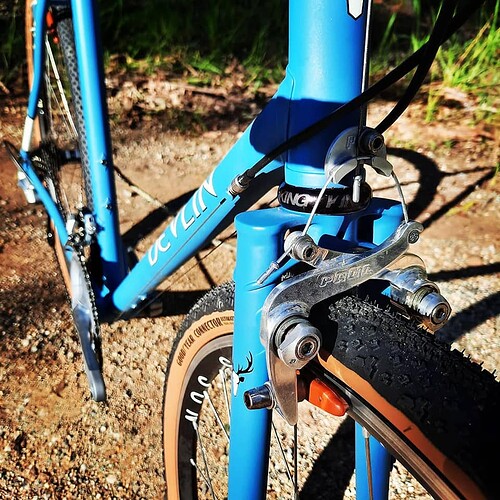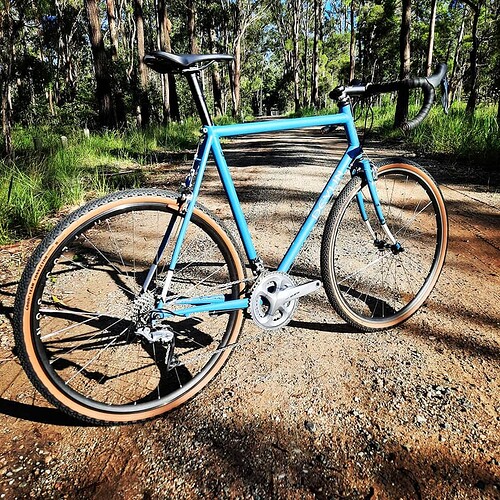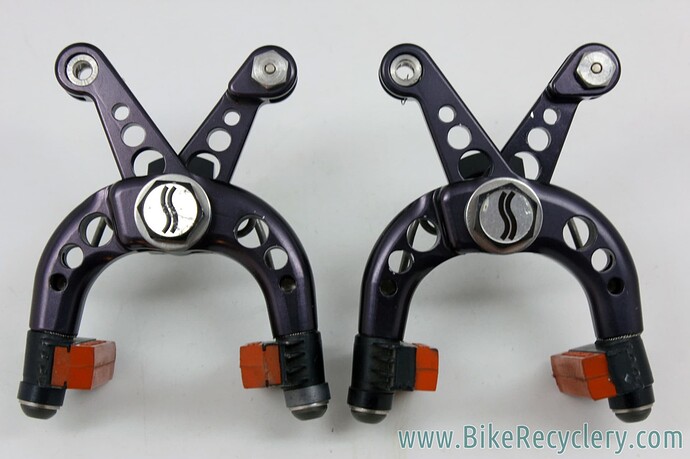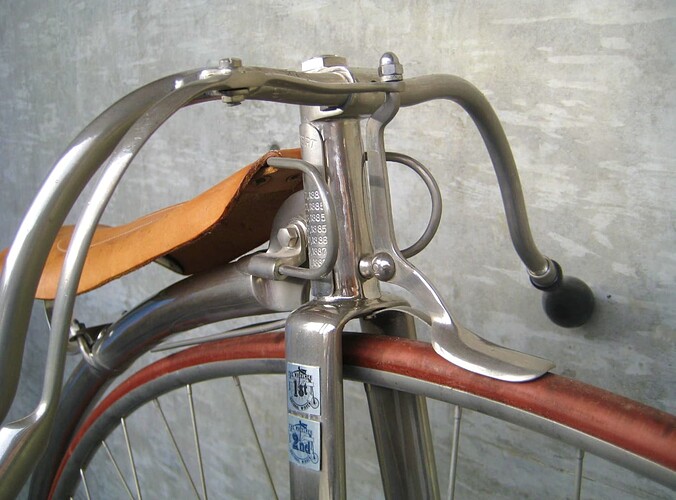Sorry, it’s time for me to bail on the forum.
I’ve owned three or four S&S bikes and haven’t had to remove forks to pack them. I ride normal large, but not XL sized bikes, so maybe it’s different than for others. I just use a cable splitter for the rear brake and everything else stays installed. I always prioritize components differently on my travel bike towards what is cheap and easy to service/replace rather than what is best in class.
I’ve ridden lots of mountain passes in the rain with rim brakes and lived to speak again. I’m a fan of disk brakes on my mountain bikes, but haven’t found them to be a big benefit on forest road touring.
I have one rim brake bike that I rarely select to take on rides because I hate the cantis that are on it. I have no issues with my other two rim brake bikes, and one is my most commonly ridden recreational bike.
I was already riding 32s with pressures in the 50s. Any lower and the tires wallow in the corners. Steel forks aren’t magic, but they can be made to ride smoother than any of the carbon forks I’ve ridden, especially if you don’t use disc brakes.
Excellent points everyone.
Travel bikes are an interesting case. We could probably have an entire thread dedicated to them. I flew more than 10 times with a 58cm rim brake Allez Sprint shoved in an Orucase ninja bag. Never got charged an oversize fee ![]() .
.
Recently, a lot of American (and European?) airlines have changed their policy on bikes. Most of them consider them as regular luggage with a small $20-50 upcharge regardless of the size. Ourcase has a great resource: The Airport Ninja's Guide To Airlines for Cyclists
Because of new airline policies and the “hoses through the headset” trend, new bike bags allow you to keep the bars on:
That being said, I personally feel way more comfortable flying with a rim-brake bike. With discs, it’s just too easy bump a lever without the pads, bend a rotor, or contaminate your system with all the pedal grease, chain lube, and tools jiggling around… It’s not something I want to worry about.
Even past these edge use cases of traveling, touring, 3000ft descents, etc… I think rim brakes suit the vast majority of cyclists.
I have plenty of friends who are extremely passionate about cycling, but don’t have as much time anymore due to family, work, life, etc. to be riding 100mi and 8000ft per week. They are happy to get in a 20-30mi spin on the weekends. The only things they care about is that their bike feels good, looks good, and works. It’s nice to pick up your bike and go for a ride without charging your derailleur or hearing your rotors twanging and scraping.
Sorry, it’s time for me to bail on the forum.
I missed this one. That is a beautiful brake. Not sure why it looks so good, but I like it alot!
Road riding around here is possible 12 months of the year, and we see the most issues with disc brakes in the winter.
Shimano flat mount callipers consistently leak from behind the pistons when riden in the rain/cold.
Noisy. Flat mount pads sit closer to the rotor then post mount causing them to rub on punchy climbs and/or sprints. This is only made worse with road grime. Add the wet rotor screech and multiply that by however many people you’re riding with.
Servicing pistons is necessary, time consuming, and not possible on some callipers.
When riden past the point of no return - a rotor, hose and calliper is just as expensive as a new rim brake rim. This happens more then you’d expect haha
For reference of what bikes around here go through - winter is 5 months of just above freezing and rain. The riding is hilly, but with no climbs over 10 minutes long. The most popular winter group ride is 100km / 1100m (60 miles / 3600 feet) and averages ~31kph (20 mph).
I used to be a wheel breaker, until I switched to disc brakes, and could build wheels favoring tension instead of true. For heavy riders, discs are the way to go for so many reasons. If I ever build another “road” frameset, I will use ISO brake tabs and short pull klampers.
I think we are all getting into the weeds over pure personal preference and individual ideas on how to set a bike up. Rim and discs brakes work. Period. Choose one. Ride lots.
I did two Pauls Racer bikes not too long ago…
Sorry, it’s time for me to bail on the forum.
Haha yeah they really got up to something with the flat mount calipers. I’ve got a set of xt calipers on my drop bar commuter that have been on half a dozen bikes without issue but the warranty bin is full of grx and ultegra flat mount calipers.
Beautiful! Curious why you chose the medium Racer over the full-size one, when you went to the trouble of brazing on the posts. I thought the medium was just for a lower reach, but does it feel different to the standard?
That is what the customer wanted in this particular instance. I’ve never used them before so can’t comment on differemce of feel between the full size ones and the mediums. The idea of a firmer feel at the level appealed to both customers.
I’m not the most experienced wheel builder, but I don’t quite see how you have to compromise between tension and true-ness?
I’ve built maybe 20 wheels and trued 100s, so I’m no expert either. But most of the wheels I’ve built have been for a 260 pound person (me). I have found that if a rim isn’t perfectly round and planar, like most rims, or has dents from use, it’s hard to balance tension and true, and compromise in wheel tension will need to be made for the perfect rim braking surface. I’ve also ridden wheels that looked perfect at first, and were built by more experienced wheel builders than I, and they did not stay that way long. If I can disregard a rim braking surface, I can build a wheel with a small hop and much better relative tension between spokes.
I’m not the most experienced wheel builder either (dozens, not hundreds) but I think what Nick is saying is that with a rim brake wheel you want to make sure the rim is very true, around 0.1-0.2mm tolerance, when the wheel is finished. Because a rim is never manufactured dead straight you’ll have to have some un-evenness in you final spoke tension to pull it into line. With disc brakes you can get away with a less straight wheel because the rotor is where the brake alignment happens, so you can focusing on maintaining more even spoke tension.
@anon68659156 I can vouch for IS Short Pull Klampers as fantastic brakes. Pretty much a quieter, easier to set up and more durable take on the BB7. I have 3 pairs of them, one set up with drop bars and the other two flat bars with Paul Canti-Levers. I don’t currently ride any rim brake bikes
Sorry, it’s time for me to bail on the forum.
I’m always surprised by how different regions can impact bike components. Seems like PNW is the harshest.
Your experiences mirror mine. Ironically, road discs are the most useful when it’s wet and shitty outside, but wet and shitty just destroy the brakes.
I don’t understand it either. Mountain brakes are so reliable and robust. I think the road product managers pushed too hard for weight and aesthetics when scoping out road discs.
I think the issues are slowly being addressed with the latest groupsets. But I am really bummed that everything new is electronic only.
